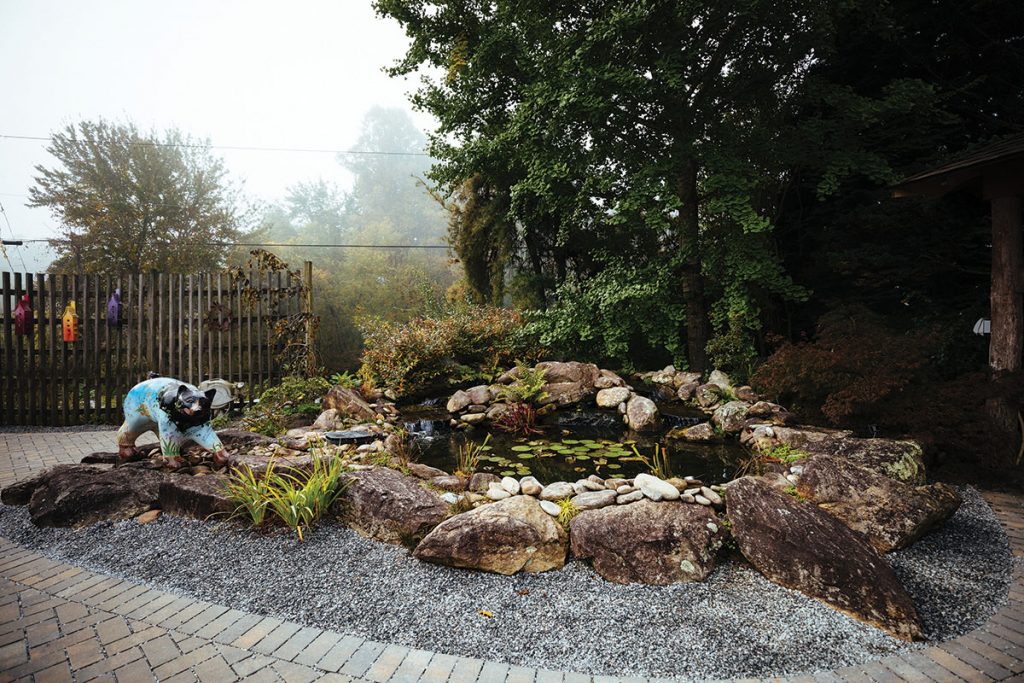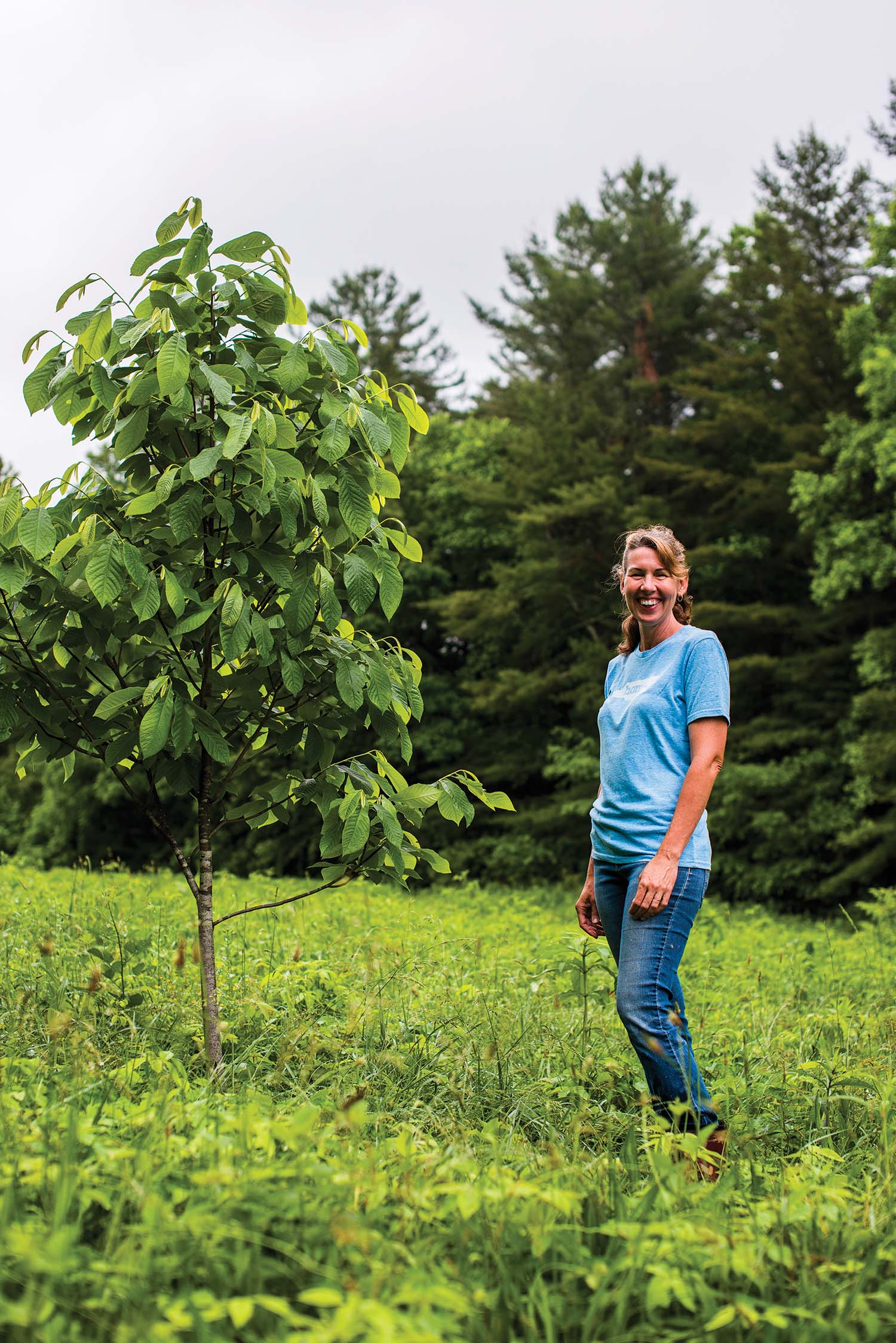
Bonnie Arbuckle prefers native wildflowers like butterfly weed.
Plenty of wildflowers have grown rare, even endangered, but the Oconee bell always had a naturally tiny range, making it interesting to botanists since the 1700s. It is indigenous only to a wedge of foothills bordering Georgia and the Carolinas, flourishing most near Lake Jocassee.
A mass of Oconee bells is featured on the Native Woodland trail at Bullington Gardens, where the flower’s inclusion fits well with the facility’s educational focus. But after taking Bonnie Arbuckle’s Wildflower ID workshop, hikers are urged to go further afield to discover the Southern Blue Ridge’s hundreds of other native species.
The pink ladyslipper, a protected natural orchid, can mostly be seen in stretches of piney woods, says Arbuckle, a volunteer at Bullington and a member of the Western Carolina Botanical Club. She also tells her students to plumb the Blue Ridge Parkway, DuPont State Forest, and Pearson’s Falls (near Saluda) during the seven-month-long wildflower season, which starts in March and ends in September but is perhaps most vivid in May and June.
Striking firepinks and flame azaleas, seven species of trillium, dramatic Turk’s Cap lilies and the delicate light-purple clusters memorably saddled with the name “hairy beardtongue” — these are some of the most photographable examples of the wild milieu. However, Arbuckle does not teach to tourists: she takes a scientific approach to her workshop. Using Newcomb’s Wildflower Guide, she asks students to learn the flowers’ Latin names and distinguish even the smallest species down to details of petal, leaf, and stem (magnifying glasses are recommended).
When referring to unseeded flowers en masse, Arbuckle prefers the term “indigenous” or “native” over “wild.” She recognizes what she calls the “tremendous increase” in conscious native landscaping in recent years, and applies the philosophy, widely used when planting trees and shrubbery, to perennials, too.
It’s a life-cycle thing. Native plants evolved in cohabitation with certain insects. The insects are attracted to that plant for food, and, in turn, those bugs nourish birds and other native wildlife. This harmonious filigree dissolves when often-inedible exotic species make the scene. Sustainability is wrecked, and frightening consequences multiply.
Take milkweed, an herbaceous native perennial seen in various colors and types in Western North Carolina, including a bright-orange variety, Asclepias Tuberosa, also known as butterfly weed. Planting milkweed to lure two major vanishing species — honeybees and monarchs — has become a full-blown mission for owners of both residential and commercial properties.
Arbuckle takes the long view when she talks about the importance of native horticulture, but she also acknowledges the ephemera of mountain wildflowers. Their bloom times, which tend to be brief, only underscore their fragility and their value. When deciding which species she’ll have her students identify, “I usually just go outside and see what’s blooming in my yard,” she says.
The Wildflower ID Workshop at Bullington Gardens (95 Upper Red Oak Trail, Hendersonville) happens Saturday, May 21, from 1-4pm. $10. Call 828-698-6104 for more information.



